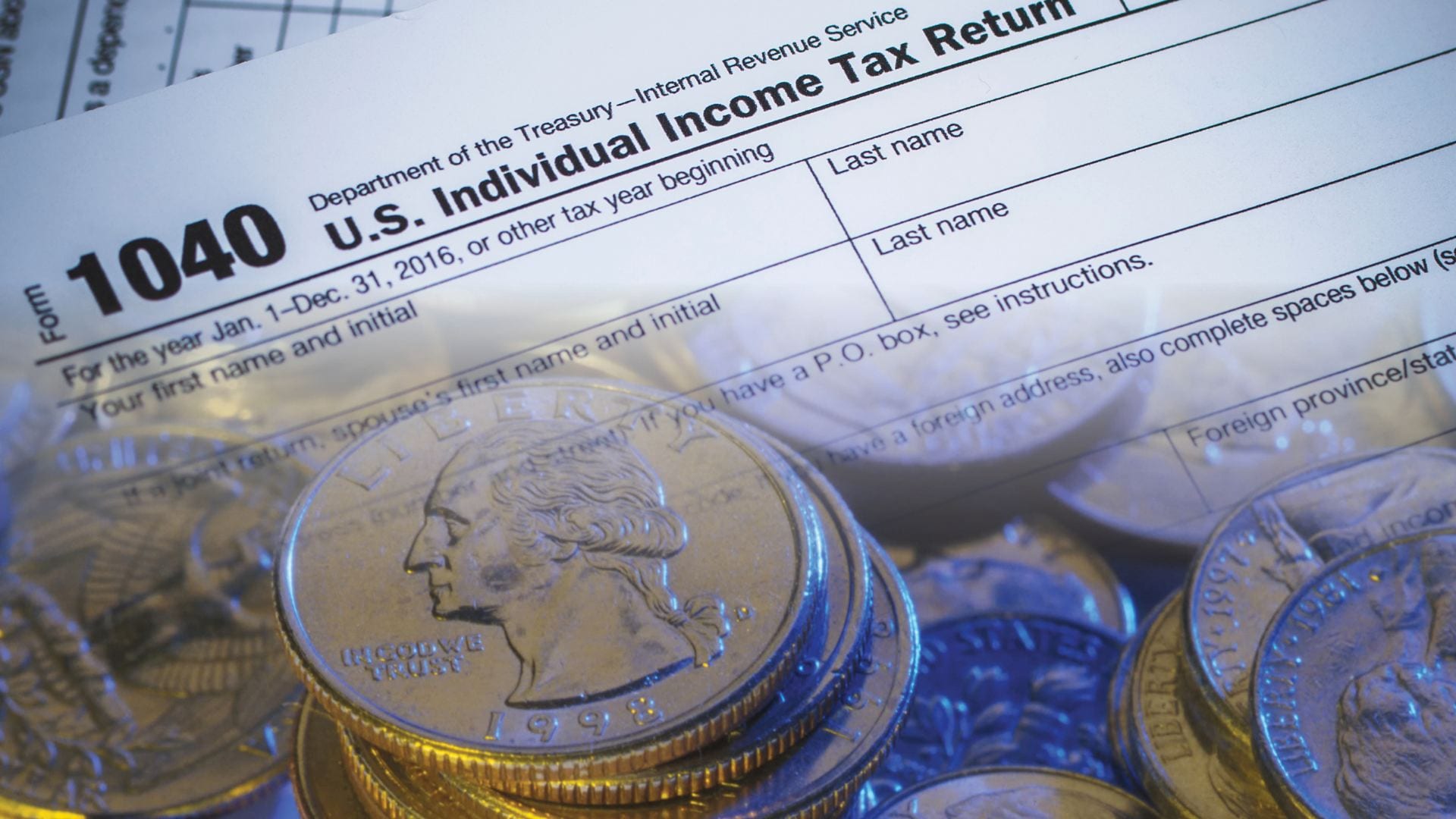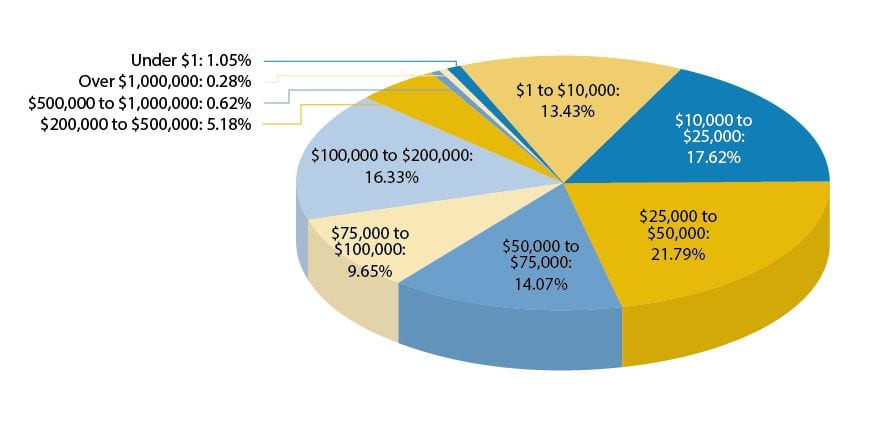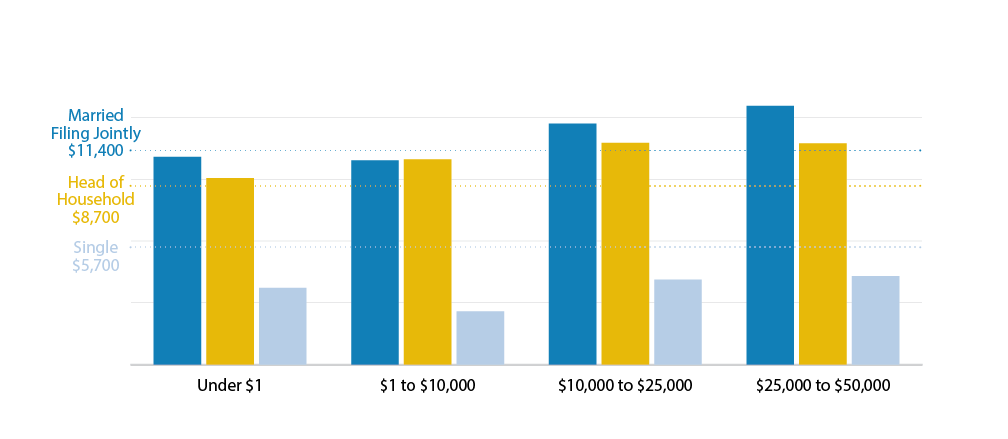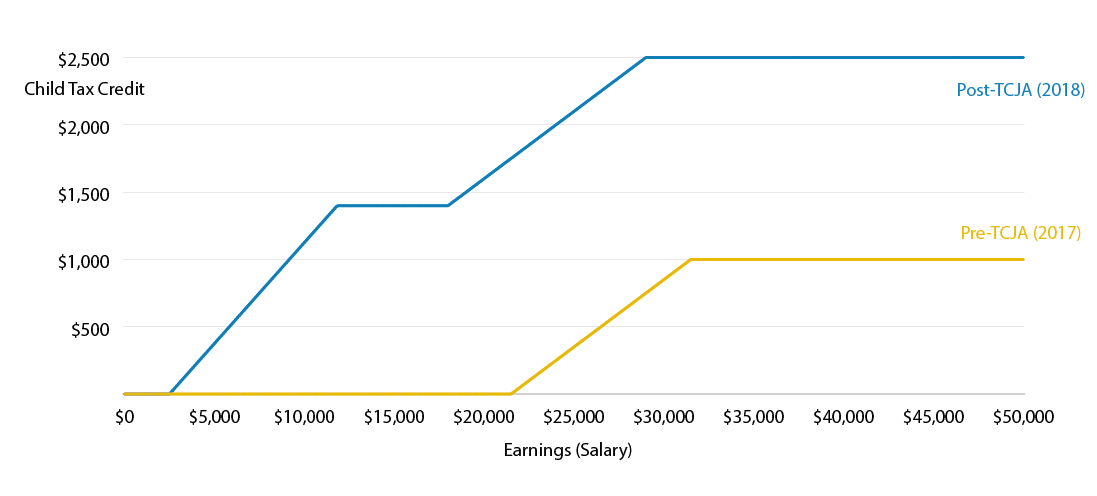Zhen Zhang, Ph.D., CPA
Assistant Professor, Department of Accounting, Towson University
On December 22, 2017, Congress passed, and the President signed the Tax Cuts and Jobs Act (TCJA). The TCJA is one of the largest tax cuts in the U.S. history. A recent study by the Tax Foundation estimates that, on a conventional basis, TCJA will reduce federal revenues by about 638 billion over the next decade. (Kaeding et al. July 2018)
The TCJA will impact American families in various ways. According to the IRS, the TCJA will reduce the average time to complete an individual income tax return by four to seven percent. In 2016, it took American individuals 2.6 billion hours to complete their tax returns (Hodge 2016). Therefore, the TCJA is estimated to save American families 104 million hours to 182 million hours in tax preparation. Multiplied by the average total employer compensation costs for private industry workers of $34.17, the total saving in compliance costs will range from 3.5 billion to 6.2 billion dollars. Among all impacts of the TCJA, the most important consideration for American individuals perhaps is how the TCJA impacts their after-tax income, i.e. take-home pay. This study focuses on the impact of the TCJA on Maryland lower-income families.
Lower-income families
For purpose of this study, lower-income families refer to the families that report an adjusted gross income (AGI) under $50,000. According to the most recent information pulled from the IRS, in 2016, more than half (53.88%) of the 2,950,840 tax returns filed in Maryland reported AGI under $50,000. Figure 1 shows the distribution of filers across income groups.
Compared to middle- or high-income taxpayers, lower-income families are more likely to benefit from the following provisions under the pre-TCJA tax laws: standard deductions, personal and dependency exemptions, child tax credit and earned income credit. While the TCJA makes no changes to earned income credit, there are major changes to the other three provisions.
Figure 1: Figure 1: Distribution of filers in Maryland by income groups (2016)
Table 1: Table 1: Standard deductions for the federal individual tax returns
| Standard Deductions | |||
| Filing Status | 2018 | 2017 | 2016 |
| Single | $12,000 | $6,350 | $6,300 |
| Head of Household | $18,000 | $9,350 | $9,300 |
| Married filing jointly or qualifying widow/er | $24,000 | $12,700 | $12,600 |
| Married filing separately | $12,000 | $6,350 | $6,300 |
The Tax Cuts and Jobs Act – Provisions
Standard deductions
The standard deduction is a fixed amount of deduction that taxpayers can use to reduce their taxable income. Alternatively, taxpayers can itemize their deductions, i.e. they keep track of certain deductible expenses and then subtract them from their income. In general, standard deductions are adjusted every year for inflation. The TCJA, however, nearly doubles the standard deductions for all filing status. Table 1 compares the new standard deductions in 2018 with those in the pre-TCJA tax years 2016 and 2017.
Figure 2: Percentage of Maryland families using standard deductions by income groups (2016)
Figure 2 provides the percentage of families using standard deductions in each income group. In 2016, 81.34% of lower-income families used standard deductions, and we can expect that the provisions of the nearly-doubled standard deductions will greatly reduce their taxable income. Moreover, among the families that claim itemized deductions in 2016, lower-income families on average claim a smaller amount of itemized deductions than middle- or high-income families, and thus, they are more likely to switch to standard deductions after TCJA, which further reduces the compliance costs for lower-income families.
Personal and dependency exemptions
The provision of the nearly-doubled standard deductions is great news for lower-income families; however, the offset to it is the elimination of personal and dependency exemptions. In 2016 and 2017, the exemption valued $4,050, meaning that taxpayers can claim an exemption of $4,050 each for themselves and their dependents.
Figure 3: Estimated average amount of exemptions by income groups,
Maryland 2016
The total amount of exemptions reduces the taxable income. Figure 3 shows, by filing status, the estimated average amount of exemptions claimed by each income group in Maryland in 2016.
The three benchmark lines represent the increases in standard deductions in TCJA for each filing status. As shown in Table 1, compared to the standard deductions in 2016, TCJA increases the standard deductions by $11,400 for married filing jointly, $8,700 for head of household, and $5,700 for single. In Figure 3, the green benchmark line is above the green bars of all income groups, suggesting that, for single taxpayers, the increases in standard deductions can offset the average negative impact of the elimination of exemption. In opposite, for families filing head of household, the net effect of the changes in standard deductions (orange benchmark line) and exemptions (orange bars) would raise their taxable income. By examining the positions of the blue benchmark line and the blue bars, the effect on the taxpayers filing married filing jointly is mixed. The net effect reduces the taxable income of those with AGI below $10,000 while increases the taxable income of those with AGI between $10,000 and $50,000.
Child tax credit
In addition to the nearly-doubled standard deductions, another change in the TCJA to compensate for the elimination of exemptions is the improvement to child tax credit. Under the pre-TCJA law, the child tax credit was $1,000 per qualifying child under age 17. It was nonrefundable, meaning that the child tax credit reduces or eliminates taxpayer’s tax liability, but any leftover amount of the credit just disappears. Also, the total credit starts to phaseout once the taxpayer’s AGI exceeded the phaseout threshold. The phaseout threshold was $110,000 for married filing jointly and $75,000 for unmarried taxpayers. Table 2 provides the number and percentage of tax returns claiming child tax credit in Maryland in 2016. It also shows the average amount of child tax credit deducted in those returns claiming child credit.
Table 2: Child tax credit of Maryland lower-income families in 2016
| Adjusted Gross Income | $1 to $10,000 | $10,000 to $25,000 | $25,000 to $50,000 |
| Number of Returns | 396,170 | 519,900 | 642,940 |
| Number of Returns Claiming Child Tax Credit | 200 | 27,590 | 132,900 |
| Percentage of Returns Claiming Child Tax Credit | 0.05% | 5.31% | 20.67% |
| Average Amount of Child Credit Claimed per Person | $235.00 | 4319.21 | $894.79 |
In 2016, average benefits are small for families with AGI under $25,000 because many lower-income families do not owe enough tax to be eligible for the full $1,000-per-child credit.
The TCJA doubles the child tax credit to $2,000 per qualifying child under age 17. It also allows a new $500 credit for any other qualifying dependents. Other qualifying dependent could be a qualifying child over age 17 or other qualifying relatives. Moreover, the TCJA substantially increases the phaseout threshold to $400,000 for married filing jointly and $200,000 for any others. Another change to the child tax credit in TCJA is that the child tax credit becomes partially refundable. Under TCJA, up to $1,400 of the $2,000 credit is refundable, i.e. any leftover credit, after eliminating taxpayer’s tax liabilities, will get the taxpayer a refund up to $1,400. This refund is limited to 15 percent of earnings above $2,500.
Figure 4: Pre-TCJA and post-TCJA child tax credit: a hypothetical scenario
The change to the phaseout threshold has little impact on lower-income families because their income are below the threshold. The major benefit comes from the provision that the credit becomes partially refundable. Figure 4 compares the amount of child tax credits pre-TCJA (in 2017) and post-TCJA (in 2018) that can be claimed by a single mom filing head of household, who has a young child under 17 and a dependent parent. The analysis assumes that the only source of income is salary and that the taxpayer uses standard deduction.
Pre-TCJA, the taxpayer receives no benefits from the child tax credit when her total earning is below $21,500. That’s because her tax due is zero when her total earning is lower than the standard deduction ($9,350) and the three exemptions ($12,150). As her earning grows, she starts to have a tax liability. For earnings between $21,500 and $31,500, the tax due gradually increases from $1 to $1,000, and accordingly, the child tax credit to offset the tax due grows in the same amount. The child tax credit maxes and remains at $1,000 until the earning meets the phaseout threshold of $75,000.
Post-TCJA, the taxpayer starts to benefit from the refundable portion of the child tax credit once her total earning reaches $2,500, even though she has no tax due yet. She starts to receive a refund of 15 cents from the IRS for every dollar she earns. The refundable child tax credit caps at $1,400 when she earns $11,833. The benefit of the child tax credit climbs again when her earning reaches $18,000 and she starts to have a tax due. The maximum credit available is $2,500 including a $2,000 child tax credit for her young child and a $500 family tax credit for her dependent parent. The maximum credit of $2,500 is realized when her earning is $29,000.
Table 3: Estimated average tax cuts for Maryland lower-income families
| Adjust. Gross Income | $0 to $10,000 | $10,000 to $25,000 | $25,000 to $50,000 | |||
| Ave. Tax Cut | % of Income | Ave. Tax Cut | % of income | Ave. Tax Cut | % of Income | |
| District 1 | $18 | 0.4% | $200 | 1.2% | $813 | 2.2% |
| District 2 | $18 | 0.4% | $153 | 0.9% | $829 | 2.3% |
| District 3 | $18 | 0.4% | $141 | 0.8% | $888 | 2.4% |
| District 4 | $13 | 0.3% | $133 | 0.8% | $914 | 2.5% |
| District 5 | $13 | 0.3% | $141 | 0.8% | $916 | 2.5% |
| District 6 | $18 | 0.4% | $203 | 1.2% | $882 | 2.4% |
| District 7 | $20 | 0.4% | $134 | 0.8% | $944 | 2.6% |
| District 8 | $16 | 0.4% | $178 | 1.0% | $907 | 2.5% |
The Tax Cuts
Although it is not exclusive, this article covers major provisions in the Tax Cuts and Jobs Act that are most significant for Maryland lower-income families. The elimination of exemptions is the greatest force dragging up the taxable income and tax liabilities. The nearly-doubled standard deductions and the doubled and extended child tax credit, on the other hand, help push down the tax numbers.
The cuts to the tax liabilities among Maryland lower-income families vary by households. The Tax Foundation estimated the average tax cuts at each income level for every congressional district. Table 3 provides the estimated average tax cuts for lower-income families in the eight congressional districts in Maryland.
Lower-income families in Maryland can expect reductions in their tax dues in 2018. Families within the same income level will expect similar tax cuts regardless of the congressional districts.
Taxpayers can also calculate the effect of the TCJA on their own families by creating a custom scenario using the 2018 tax reform calculator at https://taxfoundation.org/2018-tax-reform-calculator/. Employees, who receive W-2s and have their federal income tax withheld from the paycheck, can also determine the estimated 2018 federal income tax liability using the IRS Withholding Calculator https://www.irs.gov/payments/tax-withholding. Using the calculators to estimate the 2018 federal income tax liabilities under the newly-enacted TCJA can help taxpayers make proper and timely adjustments to the income tax withholdings with their employers and to their quarterly estimated tax payment amounts.
Data Sources
Taxpayer statistics (Maryland): IRS Statistics, Individual Income and Tax Data by Size of Adjusted Gross Income, Maryland 2016
Average dependency exemption by income group: IRS Statistics, All Returns: Exemptions by Type and Number of Exemptions, 2016
Tax cuts by congressional districts and income level: https://taxfoundation.org/2018-tax-reform-congressional-districts-map/
References
- Committee for a Responsible Federal Budget. Is President Trump’s tax cut the largest in history yet? October 25, 2017. Available at: http://www.crfb.org/blogs/president-trumps-tax-cut-largest-history-yet
- El-Sibaie, A. (2018) The Impact of the Tax Cuts and Jobs Act by Congressional District. https://taxfoundation.org/2018-tax-reform-congressional-district-map-explainer
- Hodge, S. A. (2016) The Compliance Costs of IRS Regulations. https://taxfoundation.org/compliance-costs-irs-regulations/#_ftn1
- Kaeding, N., Pomerleau, K. and Mursianu, A., (2018) Making the Tax Cuts and Jobs Act Individual Income Tax Provisions Permanent. https://taxfoundation.org/making-the-tax-cuts-and-jobs-act-individual-income-tax-provisions-permanent/
- Tax Reform – KPMG Report on New Tax Law (2018).
- The Tax Cuts and Jobs Act – The Most Significant Federal Tax Reform in the United States in Decades. https://www.whitehouse.gov/wp-content/uploads/2018/02/WH_CuttingTaxesForAmericanWorkers_Feb2018.pdf





